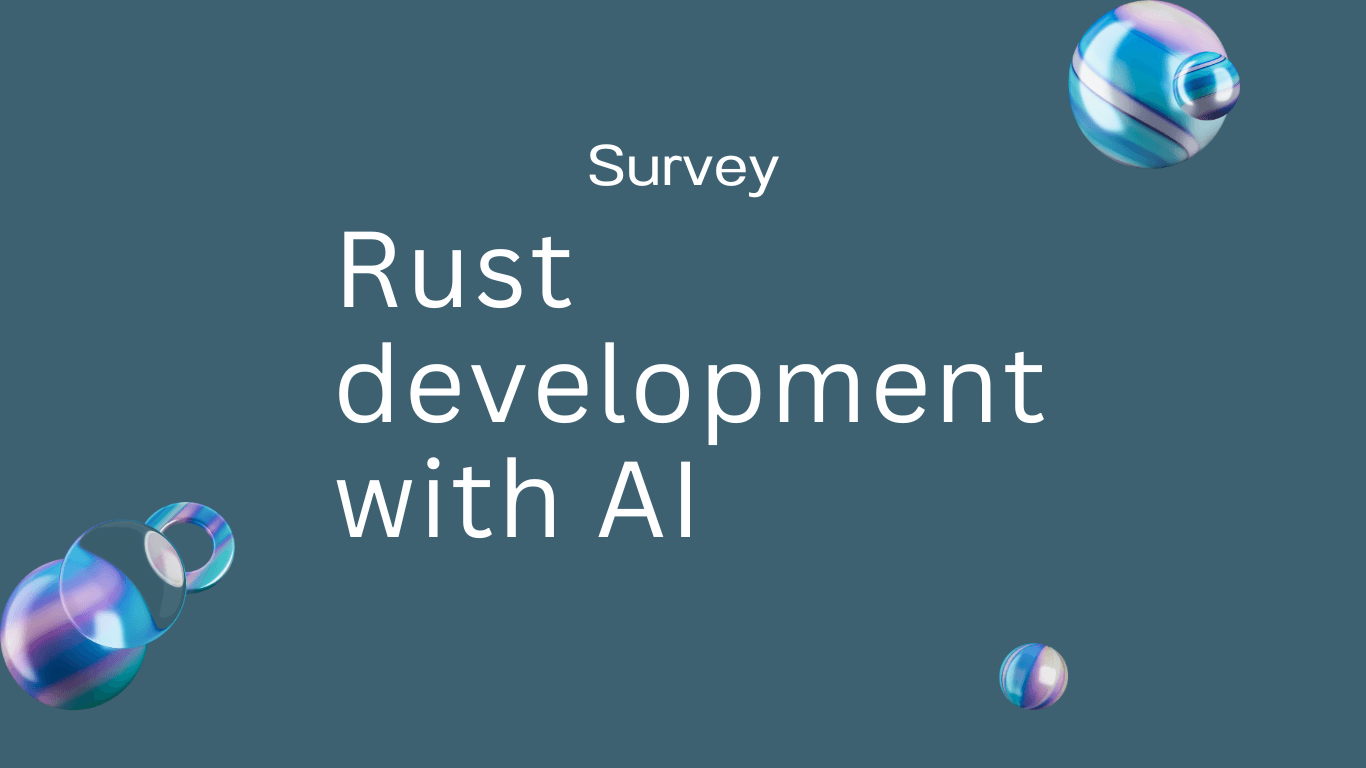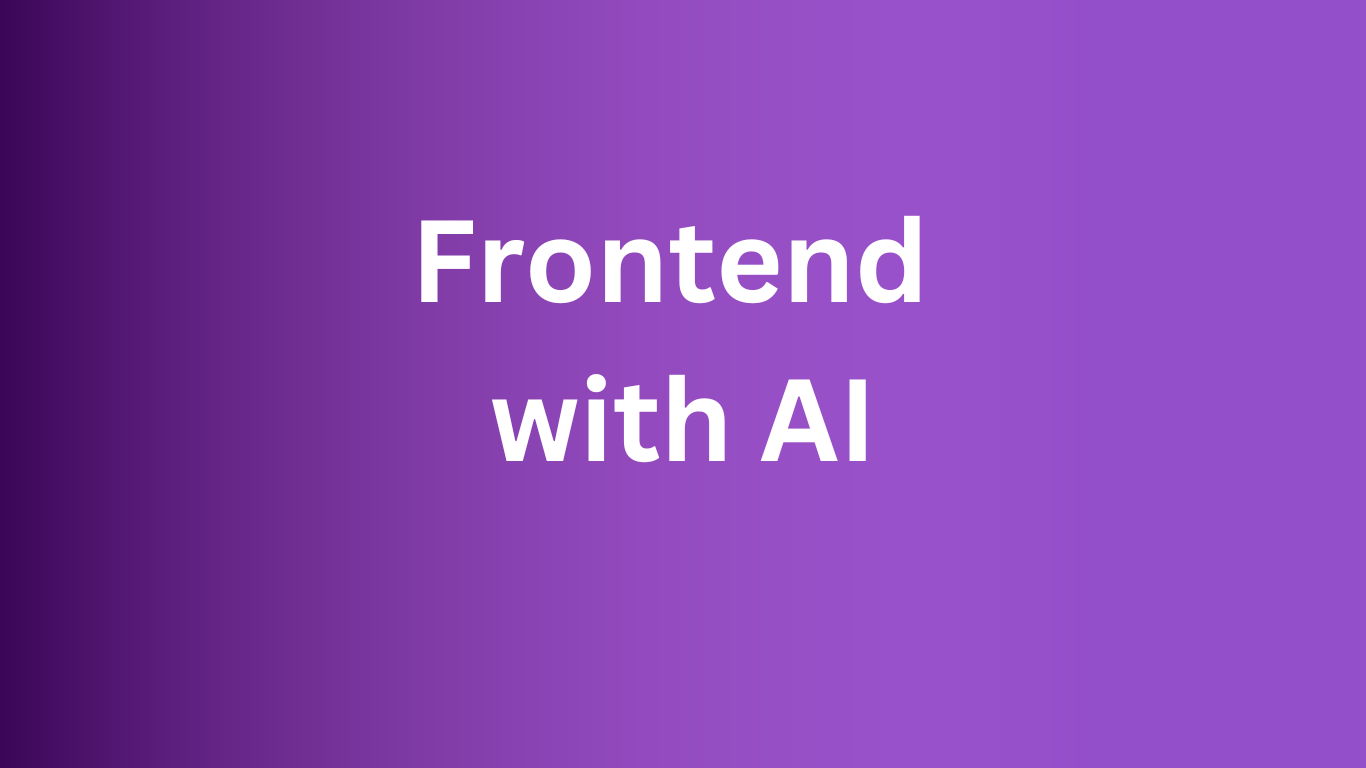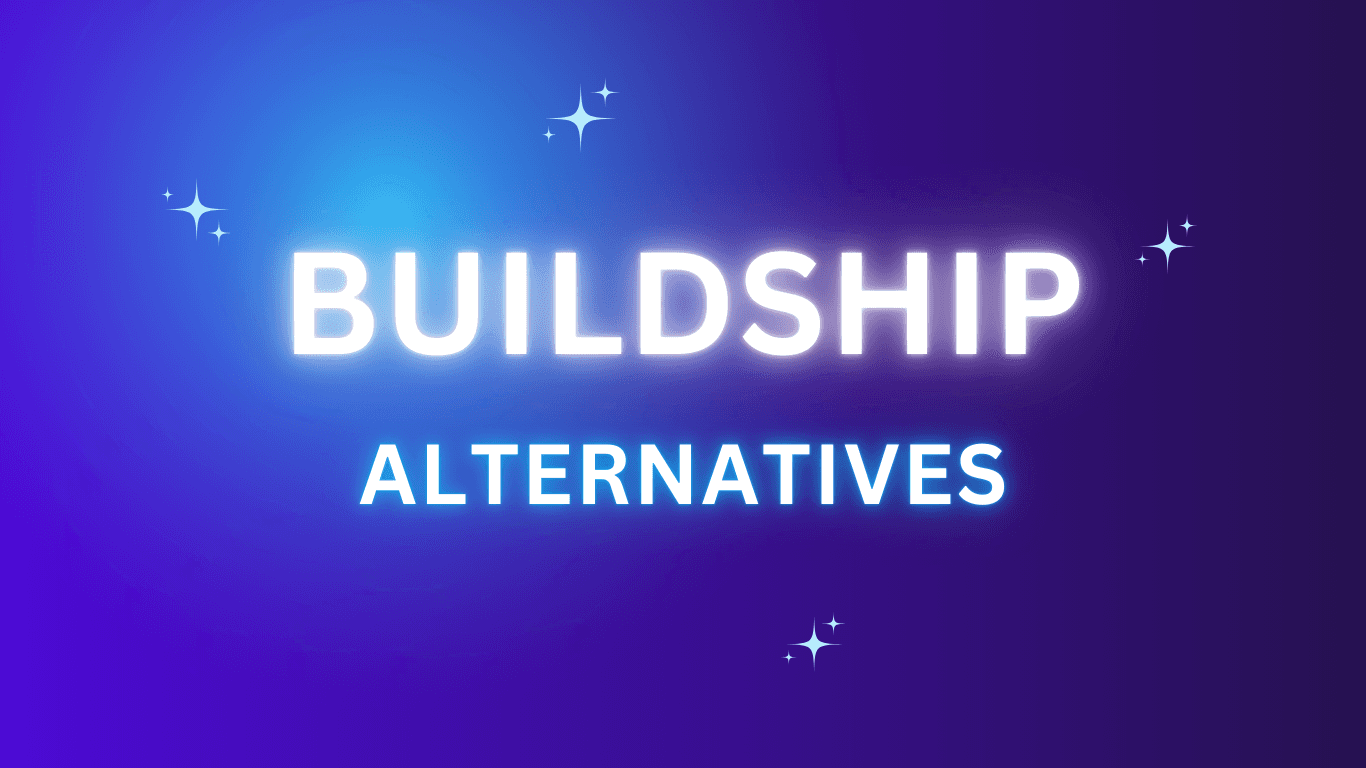7 Ways AI Accelerates Backend Development in Rust
AI is transforming Rust backend development, making it faster, safer, and more efficient. From automated code generation to advanced testing tools, AI simplifies complex tasks and boosts productivity. Here's how:
Code Generation: Tools like Metatable.ai create Rust MVPs in minutes, saving time and costs.
Testing & Debugging: AI-driven tools like Fuzzomatic identify bugs early, improving code quality.
Database Management: Solutions like SQLRay optimize queries, while LanceDB enhances vector searches.
API Development: Platforms like Fastn.ai automate API creation, ensuring speed and type safety.
Server Management: AI automates server setup, monitoring, and maintenance for Rust backends.
Documentation: Tools like gpt-doc-gen generate and update documentation in real-time.
Machine Learning Integration: Rust libraries like tch-rs and Burn enable efficient AI model deployment.
Quick Comparison
Feature | Traditional Approach | AI-Enhanced Approach |
Code Generation | Manual coding | Automated with built-in error checking |
Testing & Debugging | Manual debugging | AI flags errors early |
Database Management | Manual schema setup | Automated schema creation, query optimization |
API Development | Manual implementation | AI-assisted API generation |
Server Management | Manual setup & monitoring | Automated server creation & tracking |
Documentation | Written manually | AI-generated, real-time updates |
Machine Learning | Limited Rust libraries | Advanced Rust ML libraries (tch-rs, Burn) |
AI tools are reshaping backend workflows, helping developers overcome Rust's steep learning curve while leveraging its performance and safety strengths. Dive deeper to see how these tools can streamline your projects.
Full AI Setup Demo - Build and Deploy Your Backend in Under 5 Minutes
AI and Rust Backend Development Today
Rust backend development has seen a noticeable shift with the integration of AI tools. Generative AI has been shown to speed up task completion by 37% [5], which is especially useful given Rust's strict compile-time requirements.
"Using GitHub Copilot quickly became mentally seamless: it brought me much closer to coding at the speed of thought, especially when carrying out common, simple or repetitive coding tasks." – Joe Carstairs [5]
Big names in tech are embracing this combination. In 2024, Microsoft moved the backends of Office 365 to Rust [2], and DARPA transitioned its C codebase to Rust [2], prioritizing performance and security in critical applications.
AI's impact on Rust development is clear when looking at measurable results:
Dev Aspect | Traditional Approach | With AI Tools |
Code Completion | Manual typing | 68% of Copilot users reported higher productivity [5] |
Task Completion | Standard pace | 37% faster task completion [5] |
Learning Curve | Challenging | Simplified with AI-generated explanations [5] |
Error Detection | Manual debugging | Errors flagged earlier in the process |
These numbers highlight how AI tools make Rust development more efficient. Rust's historically steep learning curve and strict compile-time checks are now less of a hurdle, thanks to AI. Google's success with Rust in 2023 [4] further proves how AI can boost productivity.
"Every ChatGPT output must be validated unless I am only using it to remind me something I already know." – Fanis Vlachos [5]
Blending Rust's high performance and memory safety with AI tools creates a development process that's faster and less mentally taxing. This shift is also reflected in job trends: Entry-level Rust developer roles increased by 47% in the second half of 2024 [3], showing a clear rise in the adoption of AI-supported workflows.
1. Code Generation with Metatable.ai
Metatable.ai is revolutionizing Rust backend development by leveraging advanced AI models like GPT-4 and Claude Sonet 3.5 to simplify and speed up the process for developers [6].
Building a traditional MVP can take up to two months and cost around $15,000. Metatable.ai offers a faster, more affordable alternative - delivering an MVP in just 60 minutes, with pricing starting at $25 per month [7]. This drastic improvement highlights the platform’s capabilities.
"The platform's use of Rust gives us confidence our application is built for both speed and security." - Lead Developer, FinTech Firm [7]
Here’s how Metatable.ai stacks up against traditional development methods:
Feature | Traditional Development | Metatable.ai Solution |
Code Generation | Manual coding and setup | AI-driven code generation with built-in error checking |
Database Management | Complex setup and maintenance | Streamlined tools for easier management |
API Development | Manual implementation | Automatic REST API creation with integrated testing |
Metatable.ai’s serverless PaaS handles infrastructure automation, generates both frontend and backend code, and even verifies errors as part of the process [6].
Another standout feature is its ability to maintain updated project documentation. This ensures teams stay on the same page and makes it easier for new developers to get up to speed quickly [6].
The platform also includes pre-built solutions for common backend challenges, such as an authorization system and endpoint testing tools. These features further reduce development time and effort, showcasing how AI can simplify and accelerate Rust development [6].
2. Testing and Bug Detection Tools
AI-driven testing tools have made it easier and faster to find and fix issues in Rust backend systems. For example, Fuzzomatic, an automated fuzz target generator, successfully created at least one functional fuzz target for 35 out of 37 Rust projects - a success rate of 95% [8].
Running Fuzzomatic on 50 Rust projects costs just $2.90 in OpenAI API fees, offering strong performance metrics:
Metric | Performance |
Projects with Successful Fuzz Targets | 92% |
Bug Detection Rate | 38% |
Function-Based Target Success Rate | 77% |
Cost per Project | $0.06 |
Other tools also improve testing workflows. Supertest.ai provides integrated development environments with subscription options. Their Plus plan costs $19/month for 75 tests, while the Pro plan is $29/month for 150 tests [10]. These tools integrate smoothly with popular platforms like VS Code, simplifying unit test creation.
In addition, Flytrap enhances bug fixing by mirroring repositories, allowing developers to test fixes without risk [11].
Common Issues Identified by AI Testing
AI-powered tools have flagged frequent problems in Rust projects, such as:
Byte slice to UTF-8 string conversion errors
Calls to
panic!()andassert!()Oversized vector creation
Slice or array indexing mistakes
Integer overflows
Best Practices for Effective Testing
To maximize the benefits of AI testing, follow these guidelines:
Design testable functions: Write code in a way that makes it easy for automated tools to test [8].
Use isolated environments: Run fuzzing tools in contained spaces to reduce security risks [8].
Leverage advanced models: Tools like GPT-4 can provide more accurate and reliable results [9].
For deeper analysis, CASR works with debugging tools like AddressSanitizer and UndefinedBehaviorSanitizer to perform crash analysis. Meanwhile, Raygun groups errors using stack traces and contextual data to offer actionable insights [12][13].
3. Smart Database Management
AI tools are simplifying database management for Rust backends, making processes faster and more efficient [15]. For example, SQLRay, launched in February 2025, uses OpenAI models to analyze database schemas and recommend query optimizations to improve performance [15].
Vector Database Solutions
LanceDB is an open-source database designed for vector search operations with persistent storage. Built with Rust, it uses the Lance columnar format to deliver performance improvements of up to 2,000× compared to Parquet [17]. For PostgreSQL users, the Rust-based extension pgvecto.rs adds advanced vector similarity search capabilities. It supports multiple data types, including binary vectors, FP16, and INT8, expanding its functionality [14].
Automated Schema Management
Rewryte simplifies schema creation by converting schema files into SQL and Rust models. It uses a custom Database Abstraction Language (DAL) to quickly generate schemas for databases like MySQL, PostgreSQL, and SQLite [18]. This automation saves time and effort, while the next step focuses on tracking data changes.
Version Control and Data Management
Oxen is a high-performance data version control library written in Rust. It can be used via command line, as a remote server, or integrated with ecosystems like Python [16]. This tool makes version control seamless while also supporting efficient data management.
AI-Powered Database Services
MetaTable.ai provides database management services tailored for Rust backends. Their Expert plan includes features like 200GB of storage, 10 million monthly requests, 365-day backup retention, and access to premium dedicated instances. These services are enhanced with advanced AI model integration, combining Rust's performance and strong typing to elevate backend database management.
4. Fast API Development Tools
AI tools are speeding up Rust API development by leveraging advanced features and Rust's performance strengths. From automated testing to smarter database management, these tools are transforming how APIs are built, making the process faster and more efficient.
AI-Assisted API Generation
Fastn.ai is a standout platform for quick API development in Rust. For example, PackageX cut custom integration costs by 90%, and LastMinute saved 20 hours per month through automation [20].
"fastn enabled us to create a unified API with our custom data model and seamlessly integrate with third-party vendors. The platform streamlined the entire process from design to deployment. The comprehensive monitoring of our API and integration was impressive. Highly recommended for efficient and future-proof API development!" – Gleb Braverman, Co-Founder, CEO @HackerPulse [20]
Type-Safe Framework Solutions
Beyond automated API generation, type-safe frameworks simplify integration by ensuring reliable endpoint definitions. Aisil offers a powerful framework for Rust APIs with strong type safety, allowing developers to:
Automatically generate OpenAPI specifications
Build handlers using axum
Create type-safe client calls
Derive TypeScript types for seamless frontend use [21]
Performance-Focused Tools
Automation and type-safe frameworks lay the groundwork, but performance tools ensure APIs run at top speed. The AI Router framework, built in Rust, provides an OpenAI API–compatible interface and matches nginx in terms of request rate and latency [22].
MetaTable.ai API Development Features
MetaTable.ai offers robust API-specific capabilities, including:
Support for 10 million monthly API requests
200 GB of storage
Premium dedicated instances
WebAssembly deployment options
Real-World Performance Gains
A Rust and Actix-Web object detection service recently demonstrated impressive concurrent handling and fast response times, thanks to ONNX optimization.
Comparative Performance
Framework | TechEmpower Ranking | Performance Notes |
FastQL (Rust) | 5 | 2x faster than Python implementations [19] |
FastAPI (Python) | 93 | Baseline comparison |
AI Router | – | Matches nginx performance [22] |
The performance gap here highlights why more developers are choosing Rust-based API tools enhanced with AI for their backend projects.
5. Server Setup and Management
AI tools are transforming how developers handle Rust backend infrastructure, making server setup and maintenance easier and faster. Here's a closer look at some tools that simplify server creation, management, and monitoring.
Automated Server Creation
The Rust Server Auto Creator uses OpenAI's API to automate web server creation for Rust projects. With AI-driven templates, it generates deployment-ready code from simple prompts, reducing both setup time and complexity [24].
Smart Gateway Management
AI Router acts as an API gateway for Rust backends. It manages protocol translation, automates model name mapping, and routes requests efficiently between backends. For example, it can expose hosted models as "tovera-chat-v1" and "tovera-embed-v1", ensuring backend changes don’t disrupt client applications [22].
Maintenance Automation
Rust-Auto-Wipe simplifies server maintenance with automated wipes scheduled via cron jobs. It also rotates world settings, updates hostnames, sends Discord webhook notifications, and handles file cleanup [25].
Self-Hosted AI Solutions
AIrtifex, a self-hosted generative AI server built in Rust, makes deployment easier with Docker containers. It offers dedicated API endpoints for model interaction, streamlining integration for development teams [23].
Performance Tracking
AI-powered monitoring tools like Rumbo keep an eye on server metrics such as CPU, RAM, and disk space [26]. Monibot adds real-time monitoring for websites, servers, and applications, sending instant alerts for any issues [27].
Integrated Deployment Assistance
Foyle, an AI-powered deployment assistant, integrates with Visual Studio Code Notebooks to help developers streamline deployment and operations [28].
6. Code Documentation and Comments
AI tools are transforming how Rust backend documentation is created and maintained. They can now handle tasks like generating, updating, and even visualizing documentation, making the process faster and more efficient.
Automated Documentation Generation
AI-powered tools analyze Rust code to produce complete documentation. They cover everything from module objectives to function details and even include links to dependencies. For instance, gpt-doc-gen is tailored for Rust projects, documenting all public items with examples and linking types across crates [30].
Real-Time Documentation Updates
With tools like Bito AI, documentation stays synchronized with code changes. This speeds up pull request cycles by 89% and delivers 87% of the review feedback automatically [29].
"The AI Documentation Generator... ensures that the documentation is always up-to-date, accurate, and in line with the latest code changes. This level of consistency and accuracy was previously unattainable with manual processes." – Bito AI [29]
Advanced Documentation Tools
Here are a few standout tools designed for automating Rust documentation:
Tool Name | Key Features |
doc-comments-ai | Inline documentation, local LLM support, Azure OpenAI integration (v0.1.18) |
docuTron | Directory-wide documentation, file interaction analysis, extension filtering |
gpt-doc-gen | Public item docs, error section creation, cross-crate type linking |
These tools simplify documentation while ensuring it remains detailed and accurate.
Visual Documentation
AI tools now create visual flow maps to illustrate module interactions, making complex codebases easier to navigate. These flow maps can automatically correct syntax errors and be customized to exclude irrelevant files [29].
Documentation Maintenance Tips
Use skip lists to leave out unnecessary files or directories.
Customize AI prompts to focus on specific module details.
Schedule periodic reviews to ensure documentation accuracy [29].
7. Machine Learning Features in Rust
Rust offers a growing ecosystem for developers looking to integrate machine learning into their applications. With its speed, memory safety, and concurrency support, Rust is well-suited for AI-driven projects.
Core ML Libraries
Rust's machine learning capabilities are powered by several libraries designed for different use cases:
Library | Use Case | Key Features |
tch-rs | Deep Learning | PyTorch bindings, GPU support, pre-trained models |
Burn | Neural Networks | Native Rust implementation, automatic differentiation |
Embeddings | Lightweight, fast inference, ONNX support | |
Classical ML | Random forests, clustering, regression | |
opencv-rust | Computer Vision | Image processing, object detection |
Library | Use Case | Key Features |
|---|---|---|
tch-rs | Deep Learning | PyTorch bindings, GPU support, pre-trained models |
Burn | Neural Networks | Native Rust implementation, automatic differentiation |
Embeddings | Lightweight, fast inference, ONNX support | |
Classical ML | Random forests, clustering, regression | |
opencv-rust | Computer Vision | Image processing, object detection |
These libraries allow developers to execute a wide range of ML tasks while taking advantage of Rust's performance benefits.
Performance Advantages
Rust's compiled nature gives it an edge over interpreted languages, particularly in machine learning workflows.
"Rust is a great language for AI because it's compiled" – Jeffrey Cogswell, Software Developer and Author [31]
Practical Implementation
There are two common ways to integrate machine learning features into Rust backends:
Native Rust Implementation: Libraries like
tch-rsandCandleenable deploying ML models directly in Rust, making full use of the language's speed and safety.Python Integration: Rust can work alongside Python ML models using PyO3, enabling seamless interaction between the two ecosystems. Here's an example:
Real-World Applications
Rust's machine learning capabilities are already being applied in production settings:
Life Expectancy Prediction API: A web server built with Rocket and
tch-rsuses linear regression to predict life expectancy based on BMI data. This example highlights Rust's ability to handle both model serving and API endpoints efficiently [33].News Headline Classification: A system combining Polars, Candle, and Warp provides real-time text classification. This setup demonstrates Rust's strengths in processing and classifying text data with low latency [34].
Development Tips
To get the most out of Rust for machine learning, consider these suggestions:
Use tokenizers for efficient natural language processing (NLP) workflows.
Implement Milvus for managing and storing embeddings.
Explore Linfa for traditional machine learning algorithms.
Choose Burn for creating custom neural networks.
Rust's combination of speed, memory safety, and a growing ML ecosystem makes it a strong contender for building AI-powered backends, ensuring efficient and reliable performance [32].
Conclusion
AI tools are reshaping Rust backend development by significantly cutting testing times - up to 50% for regular testing and 70% for release testing [35]. Rust's strengths in performance, memory safety, and concurrency make it a reliable foundation for AI-driven automation.
Cost-Benefit Analysis
Aspect | Impact | Metric |
Testing Costs | Reduced | 20% average savings [35] |
Release Cycles | Faster | Up to 50% quicker deployment [35] |
Code Quality | Improved | Fewer support tickets [35] |
Performance | Boosted | 30–80% gains (Deepgram case) [38] |
These results highlight the practical advantages of incorporating AI.
Implementation Strategy
To make the most of these benefits, developers should approach AI adoption thoughtfully. Start with open-source tools or free plans, like MetaTable.ai's Basic plan, which provides 250,000 AI tokens per month and essential features at no cost. This allows individual developers to experiment without financial risk [36].
Introduce AI gradually, focusing on specific tasks where it can deliver immediate results - such as automated testing, code generation, or documentation. These areas have consistently shown measurable benefits across various teams.
Future Outlook
Looking ahead, Rust's expanding AI ecosystem, supported by libraries like tch-rs, burn, and ndarray, positions it as a strong choice for AI-driven backend development [1]. Rust's compatibility with Python also allows teams to integrate existing AI tools while maintaining high performance in critical areas.
To maximize success, developers should:
Ensure AI tools fit smoothly into their current workflows.
Choose solutions that provide clear, measurable outcomes.
Strike a balance between automation and human input.
Regularly evaluate and refine their AI tools for better results [36].
Rust's strict type system and well-defined boundaries already promote maintainable code. Combined with AI tools, these features create a powerful framework for automating and optimizing backend development [37]. This synergy is driving the next wave of efficiency in Rust-based projects.








